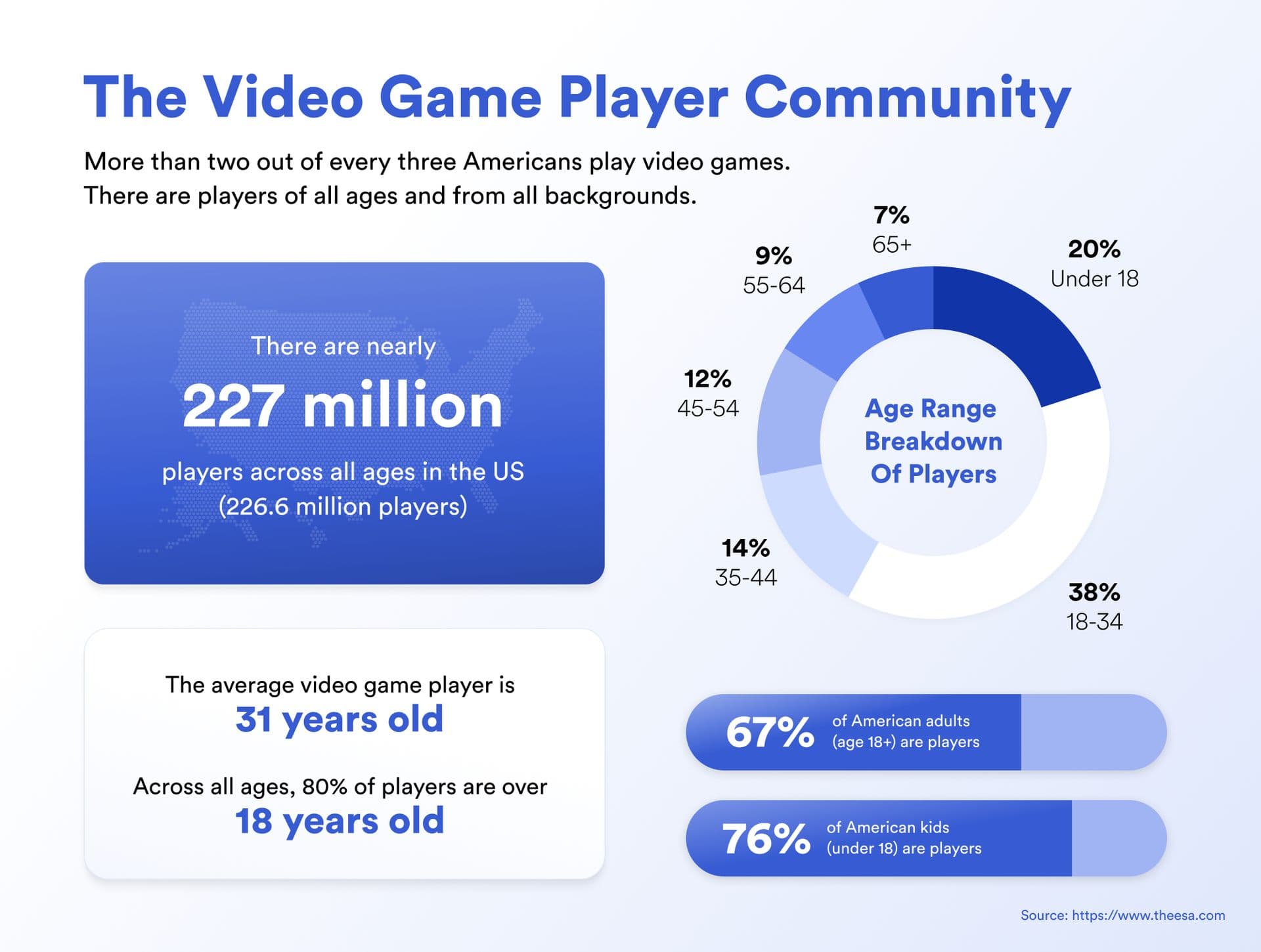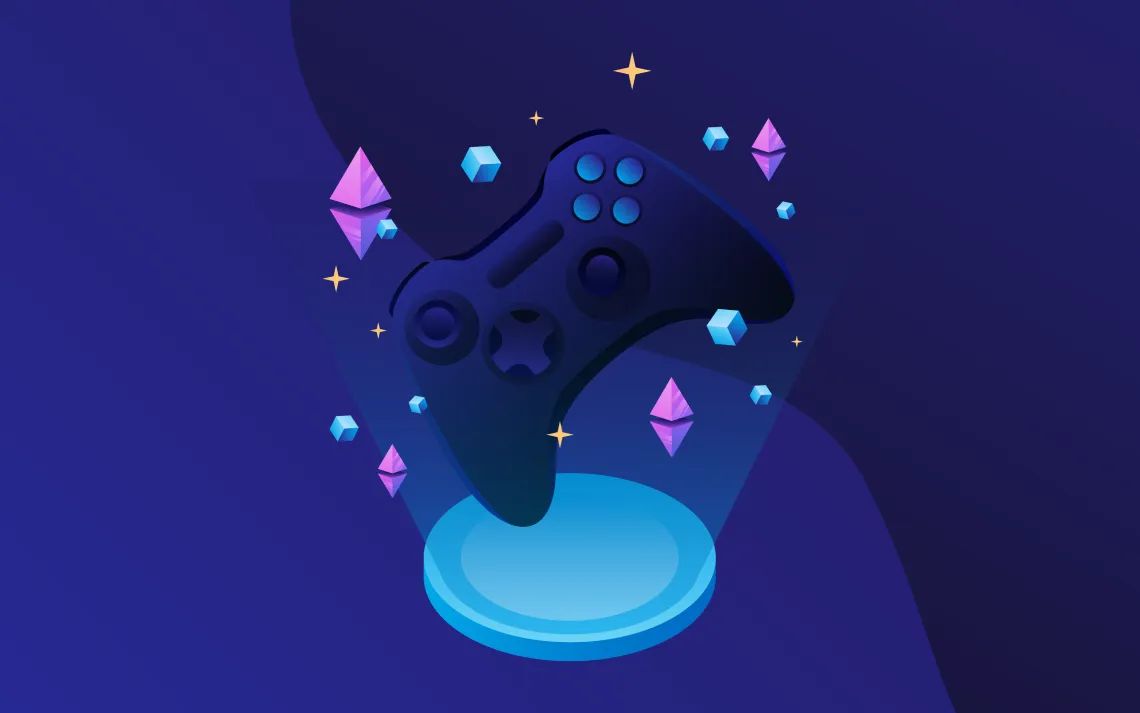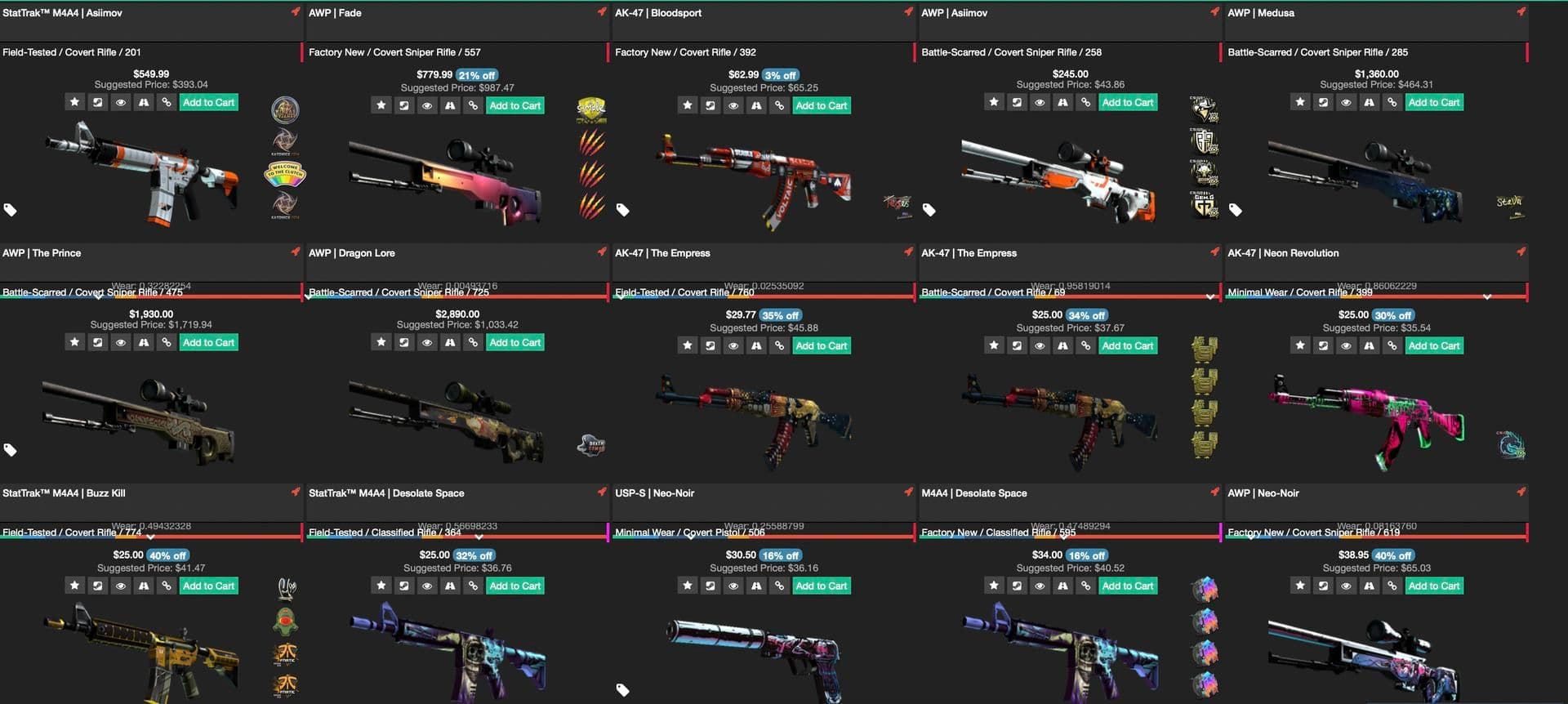
What Is Play to Earn?
Dive into the world of Play to Earn in gaming. We will look at mechanics, implications, and the transformative impact P2E holds for both web3 players and the broader gaming industry.
In the rapidly evolving landscape of digital entertainment, a groundbreaking phenomenon has taken center stage: Play to Earn (P2E or p2e). This innovative concept has revolutionized traditional gaming paradigms by seamlessly intertwining virtual economies with real-world value.
Emerging from the realm of blockchain technology and decentralized finance (DeFi), Play to Earn beckons a new era where gamers become economic participants, redefining the very essence of play. This article unpacks everything you need to know about the core of Play to Earn. We will discuss its mechanics, implications for traditional gaming, and the transformative impact it holds for both avid players and the broader gaming industry at large.
Definition: "Play-to-earn represents a genre of blockchain-based games that incorporate player-owned economies through the use of in-game assets represented by tokens and NFTs.”

What Is Play to Earn?
Traditional Gaming
Over the years, video games have significantly influenced the entertainment preferences of an entire generation. Starting with Tennis for Two in 1958, gaming has become a global phenomenon, with titles like League of Legends, Fortnite, and Minecraft captivating millions of players worldwide.
In 2018, Reuters reported that the gaming industry had outpaced traditional entertainment mediums like movies, TV, and music in terms of revenue. This trend continues to surge, with the Entertainment Software Association (ESA) estimating that approximately 66% of the U.S. population, or 227 million Americans, engage in video gaming. Across various genres and platforms, video games wield substantial influence in shaping cultural and entertainment landscapes.

What Is Play to Earn?
Video game developers have crafted a diverse array of digital realms, employing various game mechanics, visual styles, and narrative structures. Whether through immersive storytelling, flawless gameplay, or competitive multiplayer dynamics, video games offer uniquely engaging interactive experiences that set them apart from other forms of media.
In recent years, a new gaming experience has gained traction within the blockchain space, known as "play-to-earn" (P2E or p2e). This emerging gaming category introduces inherent ownership of in-game assets and currency, facilitated by cryptocurrencies and non-fungible tokens (NFTs). These digital tokens establish a direct link to a broader interconnected digital economy, imparting real-world value.
Read on to explore the transformative impact of the shift towards play-to-earn gaming on blockchain technology. Where players are now tangibly rewarded for their time, dedication, and financial investments in these games.

What Is Play to Earn?
(1) What is In-Game Value?
The concept of in-game value revolves around the idea that virtual items within a game can hold tangible value in the real world. This trend has become prevalent across a diverse array of popular games, challenging traditional gaming economic models. Players, under the right circumstances and environments, collectively attribute value to various aspects of a video game, encompassing gameplay features and both utilitarian and purely aesthetic in-game items.
The flourishing marketplaces and escalating valuations of rare in-game items in games like Counter-Strike: Global Offensive (CS:GO), Valorant, World of Warcraft, Genshin Impact, and others underscore the expanding phenomenon of player-generated value across a spectrum of video games spanning different genres.

What Is Play to Earn?
CS:GO, a widely enjoyed and fiercely competitive multiplayer first-person shooter (FPS), features traditional gameplay where teams of five compete against each other. Armed with a select set of items available equally to all players, those with superior game sense and precise aim ascend to the top of the leaderboard.
Some of the most sought-after cosmetic skins in CS:GO fetch prices in the tens of thousands of dollars on external marketplaces. Additionally, within the game, players can purchase "cases" or loot boxes that dispense randomized in-game items, predominantly cosmetic in nature. Despite lacking direct impact on gameplay, these rare items hold considerable value within the CS:GO player community.

What Is Play to Earn?
Contrastingly, other game genres, like massively multiplayer online role-playing games (MMORPGs), introduce items that confer in-game advantages. These games often adopt a "pay-to-win" model, where players who invest the most time and money possess the strongest attributes or most potent in-game items.
However, unlike CS:GO, MMORPGs generally lack a formal link to the real-world economy, although they boast robust in-game markets and unofficial trading platforms where virtual goods are exchanged for actual currency. Unsanctioned trading is prevalent, with players resorting to external communication channels or third-party websites, despite the inherent risks involved.
In "gachapon games" such as Genshin Impact, where players are encouraged to continuously spend real-world money on loot boxes to acquire premium items and characters, in-game value significantly contributes to the game developer's revenue.

What Is Play to Earn?
Gacha games, named after the gachapon machines that dispense limited edition toys, have gained much popularity over recent years. Genshin Impact's success in its first year, surpassing other games in revenue, underscores the influence of in-game goods as value drivers, even in the absence of an integrated player marketplace.
Whether acquiring a stylish skin in a skill-based FPS or obtaining powerful items through MMORPG or gachapon loot boxes, one undeniable truth remains—players play a pivotal role in creating and perpetuating the real value of these in-game items. The act of purchasing in-game items or loot boxes represents a tangible assignment of value to intangible digital entities in a remarkably concrete manner.
(2) What Drives In-Game Value?
Power of Play?
In a follow-up to the "Essential Facts About the U.S. Video Game Industry" 2023 report by the Entertainment Software Association (ESA), new findings have shed light on the transformative power of video games, revealing that they extend beyond mere entertainment.
The ESA conducted a survey, encompassing nearly 13,000 players aged 16 and older across 12 countries, including Australia, Brazil, Canada, France, Germany, Italy, Japan, Poland, South Korea, Spain, the United Kingdom, and the United States. While the survey affirmed that the primary motivation to play video games remains to have fun, it also unveiled a range of benefits that gamers worldwide derive from their gaming experiences.
The ESA's survey uncovered the top reasons for playing video games, with 69% of respondents citing fun as their primary motivation, followed by 63% who play to pass the time, and 58% who use games for stress relief and relaxation. Furthermore, the research indicated that video games contribute to improved mental health, with 71% of players reporting reduced stress, 61% experiencing decreased anxiety, and 58% feeling less isolated or lonely.

What Is Play to Earn?
What prompts players to attach such significance to in-game items?
The notion of in-game value might be confusing for those unfamiliar with gaming.
A fundamental factor lies in social motivation, encompassing elements like peer competition and social interaction, which play a substantial role in motivating gamers. Alongside factors like escapism and stimulation, players tend to form communities around games that cater to these intrinsic needs, generating value from within.
To illustrate this concept, consider the analogy of a traditional solo sport such as golf. At its core, golf can be a solitary activity—grab a set of clubs, locate a course, and you're set for a round of single-player golf.
However, the dynamics of single-player golf evolve when transitioning to multiplayer mode. Engaging in golf with a group of friends transforms the experience into a blend of competition and social interaction. Each golf stroke is scrutinized against the others, a standard of par is established, and a skill hierarchy emerges. Friendships (or rivalries) are formed, a social hierarchy takes shape, and the game gains significance as a meaningful way for players to spend their time.
In the realm of golf, social status is communicated through items like clubs and clothing, surpassing pure utility in terms of value. While in single-player mode, valuable golf clubs are those that enhance a player's shots, in multiplayer, these clubs gain added value due to the infusion of social dynamics and competitive gameplay. Consequently, items such as signed t-shirts and hats from professionals become symbols of status with increasing social and real-world value.
This phenomenon is not exclusive to gaming but resonates in popular professional athletics industries. From athlete-endorsed shoes to autographed jerseys and in-game gear, fans globally find value in these collectibles, many of which serve no practical purpose. Similarly, popular video games manifest this effect through valuable in-game items and currencies.
Collectively, players gravitate towards games that align with their needs, whether it's for competitive enjoyment, a welcomed distraction, or the fulfillment of other essential requirements. In-game value is cultivated through the symbiotic relationship between a game and its players. When functionally integrated into the right environment, players and games collaborate to establish a robust foundation of in-game value. Nevertheless, achieving this harmonious balance remains a rarity among the myriad of games available.
(3) What is Value Creation?
The prevailing model in the mainstream video game industry exhibits a centralized control of game content. A singular entity holds sway over game development, access, and inherent features, a phenomenon commonly known as centralization—where control is concentrated in the hands of a single party or a select group.
In this paradigm, the in-game value generated by online multiplayer games is predominantly governed and overseen by game developers or publishers, with occasional instances of limited sharing. Notably, control over value in all online multiplayer games inherently rests with the game developer.
Divergent Economic Approaches
Closed Economies vs Open Marketplaces
A tangible illustration of this dynamic emerges when comparing two popular multiplayer video games today: Valorant and CS:GO. Both are skill-based FPS games with purely cosmetic in-game items that hold no utility within the game itself.
In CS:GO, players enjoy more extensive opportunities to accumulate value and reap rewards from their investments, thanks to numerous open third-party marketplaces and the native ability to sell in-game items. Conversely, Valorant allows no third-party marketplaces for its in-game items.
CS:GO's well-constructed game mechanics, a thriving community of competitive players, and third-party-facilitated open marketplaces synergize to create substantial in-game value. Each in-game item holds a market price, players tangibly own items, and the game developer benefits from ongoing revenue fueled by players' enthusiasm for in-game items.

What Is Play to Earn?
The significance of open marketplaces is paramount. In closed systems without marketplaces, the in-game value is confined to the initial purchase price of a specific in-game item, reminiscent of gachapon games.
To illustrate, consider a company selling rare and valuable shoes but strictly prohibiting all third-party transactions. Opening these items to free-market dynamics transforms them into economic drivers based on community demand. While the game company sets a fixed price, players can now engage in trading on a marketplace, multiplying the economic impact.

What Is Play to Earn?
Valorant operates within a closed system, with items entirely excluded from marketplace activities. Trading, buying, or selling is not possible. Players can purchase in-game points with real money for a chance to obtain items restricted to a single account. No in-game economy can emerge—these mechanisms are absent unless the game's entity integrates the functionality.
This limitation hinders the growth of in-game value from a free-market perspective. All Valorant items retain static prices, and in-game value lacks the potential for growth seen in a CS:GO marketplace. Regardless of an item's rarity or value, players have no means to expand upon the initial item release, hindering the creation of item hierarchies with escalating values that benefit both players and the game developer.
In the current video game industry landscape, centralized entities can revoke a player's ownership of an item or opt to ban in-game item transactions, retaining the initial in-game value for themselves and eliminating the prospect of player-driven growth. While players largely contribute to the value within online multiplayer games, they lack control over the value of items or in-game currency.

What Is Play to Earn?
This is where cryptocurrencies and NFTs, or Non-Fungible Tokens, become indispensable in empowering players and establishing a fair playing field for all video game stakeholders. Games featuring sovereign item ownership shift the focus from a player's earnings through gameplay to fostering collective player autonomy through permissionless marketplaces and verifiable ownership of digital assets, unlocking the untapped potential of in-game value.
(4) Player-Driven Economies?
Power of Play-to-Earn Mechanisms
An increasing number of blockchain-based games are striving to grant players genuine digital ownership of in-game items using NFTs, or Non-Fungible Tokens, while also linking in-game currency to real-world markets through tokens. These games aim to provide players with an impartial and tangible gaming experience by fostering player-owned economies that operate without restrictions.
By leveraging blockchain technology, games can evolve into play-to-earn platforms, enabling the creation of robust, distinctive, and formal economies driven by player-generated value. While certain gameplay elements may still be centrally managed during development, the use of NFTs, or Non-Fungible Tokens, for in-game items and permissionless player marketplaces ensures a decentralized trading environment. In these open platforms, no entity holds the authority to revoke trading privileges or confiscate in-game items from players.
Built on principles of transparency, decentralization, and collective decision-making, blockchains and NFTs serve as foundational elements for new games to adopt these values from the outset or for existing games to transition towards a more equitable system, offering genuine ownership to players.
Examples in Gaming
Trading Card Games (TCGs)
A noteworthy example of verifiable ownership exists in trading card games (TCGs) like Pokémon and Yu-Gi-Oh. These games feature valuable cards acquired through real-life equivalents of loot boxes: card packs. Players purchasing these packs receive rare cards at random, becoming exclusive owners and beneficiaries of the pack's contents.

What Is Play to Earn?
As Pokémon, Yu-Gi-Oh, and similar games gained popularity, both game designers and players reaped rewards. Game designers profited from initial sales and the network effects of third-party marketplace activities, while players enjoyed ownership of valuable cards, with the option to sell or trade. This model, demonstrated by Magic the Gathering's publisher Wizards of the Coast in 2021, has proven lucrative for many collectible-based games.

What Is Play to Earn?
NFTs, or Non-Fungible Tokens, replicate this unequivocal ownership for digital items. Blockchain technology transforms in-game items into NFTs, empowering players to benefit collectively from their investments of money, time, and effort. Blockchain-based TCGs like Gods Unchained and Splinterlands already offer players indisputable ownership of their cards, creating a direct link to a broader economy.

What Is Play to Earn?
Massively Multiplayer Online Role-Playing Games (MMORPGs)
Socially-oriented game genres, such as MMORPGs, stand to gain significantly from the integration of blockchain technology. Historically, these games featured robust in-game marketplaces where players bought and sold items using in-game currency earned through various in-game activities.
MMORPG enthusiasts, dedicated to character advancement, are often limited to in-game rewards. However, due to players' valuation of in-game achievements, off-the-books transactions are common. Implementing blockchain technology in MMORPGs could eliminate barriers and enhance functionality, enabling in-game currency to be freely earned and sold globally. Permissionless marketplaces would assign a defined market value to players' in-game items (NFTs) and fungible in-game currency, driven by sustained demand for digital goods.

What Is Play to Earn?
Skill or Strategy-Based Games
In skill or strategy-based games, players can also benefit from NFTs, particularly in games like CS:GO, which already have marketplaces facilitating transactions between in-game items and the external world. Lower fees and user-friendly experiences can be achieved through NFT ownership and transfer without direct involvement from game development companies, fostering censor-resistant ecosystems based on verifiable ownership through third-party marketplaces and innovative products utilizing NFTs, or Non-Fungible Tokens.

What Is Play to Earn?
Final Thoughts
The emergence of blockchain technology and NFTs has ushered in a new era for online gaming, fostering player empowerment and verifiable ownership. The concept of play-to-earn, exemplified by blockchain-based games, not only ensures a fair and unbiased gaming experience but also establishes player-owned economies with tangible benefits.
Whether in trading card games, MMORPGs, or skill-based games, the integration of NFTs opens up avenues for players to truly own their in-game assets, participate in robust marketplaces, and even potentially earn real-world value.
As the gaming landscape continues to evolve, the principles of transparency, decentralization, and collective decision-making embedded in blockchain technology pave the way for a more inclusive and equitable gaming ecosystem. Players, developers, and enthusiasts alike stand at the forefront of a transformative era where ownership, value, and opportunities are reshaping the very essence of digital gaming.
This article was inspired by an original blog post from Chainlink, you can read the full post on their website here for more information.
About the author
Eliza Crichton-Stuart
Head of Operations
Updated:
July 4th 2025
Posted:
March 1st 2024




